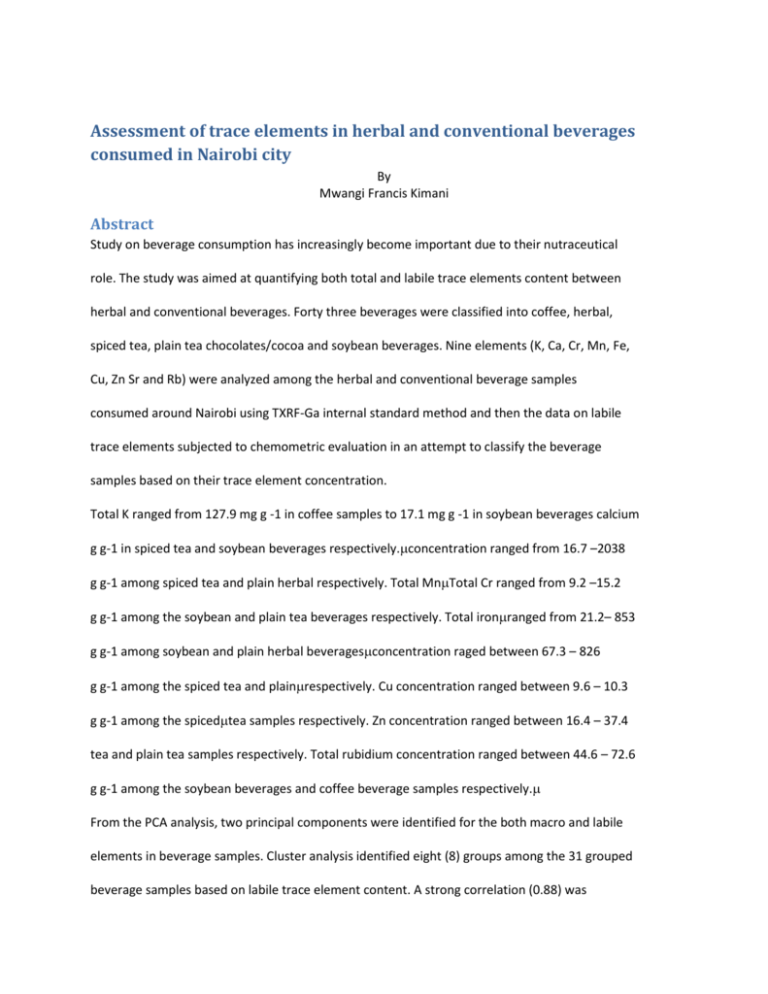Assessment of trace elements in herbal and conventional beverages
advertisement

Assessment of trace elements in herbal and conventional beverages consumed in Nairobi city By Mwangi Francis Kimani Abstract Study on beverage consumption has increasingly become important due to their nutraceutical role. The study was aimed at quantifying both total and labile trace elements content between herbal and conventional beverages. Forty three beverages were classified into coffee, herbal, spiced tea, plain tea chocolates/cocoa and soybean beverages. Nine elements (K, Ca, Cr, Mn, Fe, Cu, Zn Sr and Rb) were analyzed among the herbal and conventional beverage samples consumed around Nairobi using TXRF-Ga internal standard method and then the data on labile trace elements subjected to chemometric evaluation in an attempt to classify the beverage samples based on their trace element concentration. Total K ranged from 127.9 mg g -1 in coffee samples to 17.1 mg g -1 in soybean beverages calcium g g-1 in spiced tea and soybean beverages respectively.concentration ranged from 16.7 –2038 g g-1 among spiced tea and plain herbal respectively. Total MnTotal Cr ranged from 9.2 –15.2 g g-1 among the soybean and plain tea beverages respectively. Total ironranged from 21.2– 853 g g-1 among soybean and plain herbal beveragesconcentration raged between 67.3 – 826 g g-1 among the spiced tea and plainrespectively. Cu concentration ranged between 9.6 – 10.3 g g-1 among the spicedtea samples respectively. Zn concentration ranged between 16.4 – 37.4 tea and plain tea samples respectively. Total rubidium concentration ranged between 44.6 – 72.6 g g-1 among the soybean beverages and coffee beverage samples respectively. From the PCA analysis, two principal components were identified for the both macro and labile elements in beverage samples. Cluster analysis identified eight (8) groups among the 31 grouped beverage samples based on labile trace element content. A strong correlation (0.88) was identified for mg and Zn. While negative correlation was identified between K – Mn (0.15) and K – Fe (0.13) relations.






